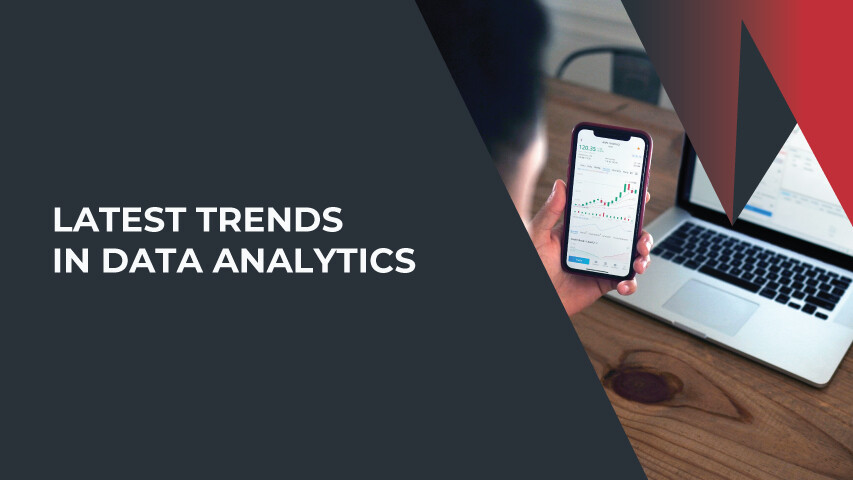
Latest Data Analytics Trends In 2023

The world of data analytics is expanding rapidly, and the global data volume is set to reach 181 zettabytes by 2025, according to Statista. The potential value of this vast volume of raw data can only be realized through effective analysis. With data analytics, businesses can extract insights to help them understand customers' behavior patterns, identify mistakes, forecast trends, and more. This article will explore the top 13 data analytics trends of 2023 and beyond, arranged by their compound annual growth rate (CAGR).
Artificial Intelligence and Machine Learning
The first trend in data analytics is the increased usage of Artificial Intelligence (AI) and Machine Learning (ML) technologies. These technologies have already played an essential role in the growth of different businesses across various industries. With the help of AI and ML, businesses can build and train models that can consume large amounts of data and deliver useful insights. Well-trained models can analyze different factors to deliver accurate forecasts, spot patterns, and answer questions, among other things. In 2023, open-source solutions will dominate the AI and ML sectors. Commercial AI and ML applications will help develop more scalable solutions for project management, model management, data reuse, transparency, and lineage.
Synthetic Data
Synthetic data is information generated artificially, and the fast-paced development of AI and ML has driven this trend. Some businesses experience a shortage of data to train models, and the larger datasets are used for models' training, the more accurate forecasts and answers they will deliver. Artificially-created datasets have significant advantages over real-world data, including increased data quality, fewer security concerns, and easy collection. The global synthetic data generation market is expected to grow fast, with a 34.8% CAGR, and by 2024, roughly 60% of all the data used to train AI and ML models will be generated artificially, according to Gartner.
Augmented Analytics
Augmented Analytics uses Machine Learning and Artificial Intelligence to amplify data processing and sharing by automating important analytics tasks, such as data preparation, analysis, and creation of accurate models. Augmented analytics has been essential in empowering more individuals to pick up business insights from data without using complex mathematics or computer science. The augmented analytics market share was valued at $10.06 billion in 2021 and is projected to reach $103.87 billion with a CAGR of 29.5% in 2030.
Streaming and Real-time Data Analytics
Real-time data analytics is the process of exploring recently-collected information, and results of data analysis are usually provided within several seconds or minutes after receiving a query. Streaming data analytics is the continuous data analysis process, usually applied to small datasets that can be rapidly analyzed without consuming many resources. The application of streaming and real-time data analytics helps businesses get access to valuable insights or users' behavior patterns instantly, allowing them to offer more suitable offers or suggest products to customers.
Conversational Analytics and Natural Language Processing
Voice-enabled devices have become popular in different companies and businesses due to their ease of use in the interaction of clients and businesses. According to Statista, the number of voice-enabled devices worldwide will surpass the 8-billion milestone in 2024. This technology will continue to rise as one of the main trends in data analytics as it provides integrated voice tools. Companies realize conversational analytics brings considerable benefits, such as sentiment analysis, enhanced social listening, and personalization. Insights are better delivered through conversational analytics by conversing with data through AI-driven combinations of natural language processing (NLP) and natural language generation (NLG).
OPEN SOURCE ANALYTICS
Open-source analytics software is free to use and modify, allowing businesses to customize it to their needs. It also provides access to a vast community of developers who contribute to software development. Open-source analytics has become increasingly popular due to its flexibility, cost-effectiveness, and ability to customize it to meet specific business requirements.
Some popular open-source analytics tools are Python, Apache Spark, Apache Hadoop, and Elasticsearch. The open-source analytics market is expected to grow at a CAGR of 25.8% between 2021-2028, reaching $43.4 billion by 2028.
EDGE ANALYTICS
Edge analytics refers to data analysis at the network's edge, where the data is generated. The goal is to analyze the data locally, near the source, instead of transmitting it to the cloud for analysis. Edge analytics is particularly useful in situations where low latency is essential and there is limited network bandwidth or connectivity.
The global edge analytics market is expected to grow with a CAGR of 25.2% between 2021-2028, reaching $20.5 billion by 2028.
ETHICAL ANALYTICS
As the use of data analytics becomes more widespread, there is growing concern about the ethical implications of its use. Ethical analytics involves the responsible use of data analytics to ensure that individuals' privacy, security, and other rights are protected.
Ethical analytics involves being transparent about how data is collected and used, ensuring that it is accurate and unbiased, and providing individuals with control over their data. It also involves complying with regulations and guidelines related to data privacy and security.
CONCLUSION
The field of data analytics is constantly evolving, and businesses need to stay up-to-date with the latest trends and technologies to remain competitive. The trends listed above are just a few of the many emerging trends in data analytics.
By leveraging these trends, businesses can gain valuable insights into their customers, competitors, and operations, enabling them to make more informed decisions and stay ahead of the competition.
The future of data analytics looks bright, and businesses that invest in data analytics technologies and strategies will be well-positioned to take advantage of the many opportunities.





Leave a Comment